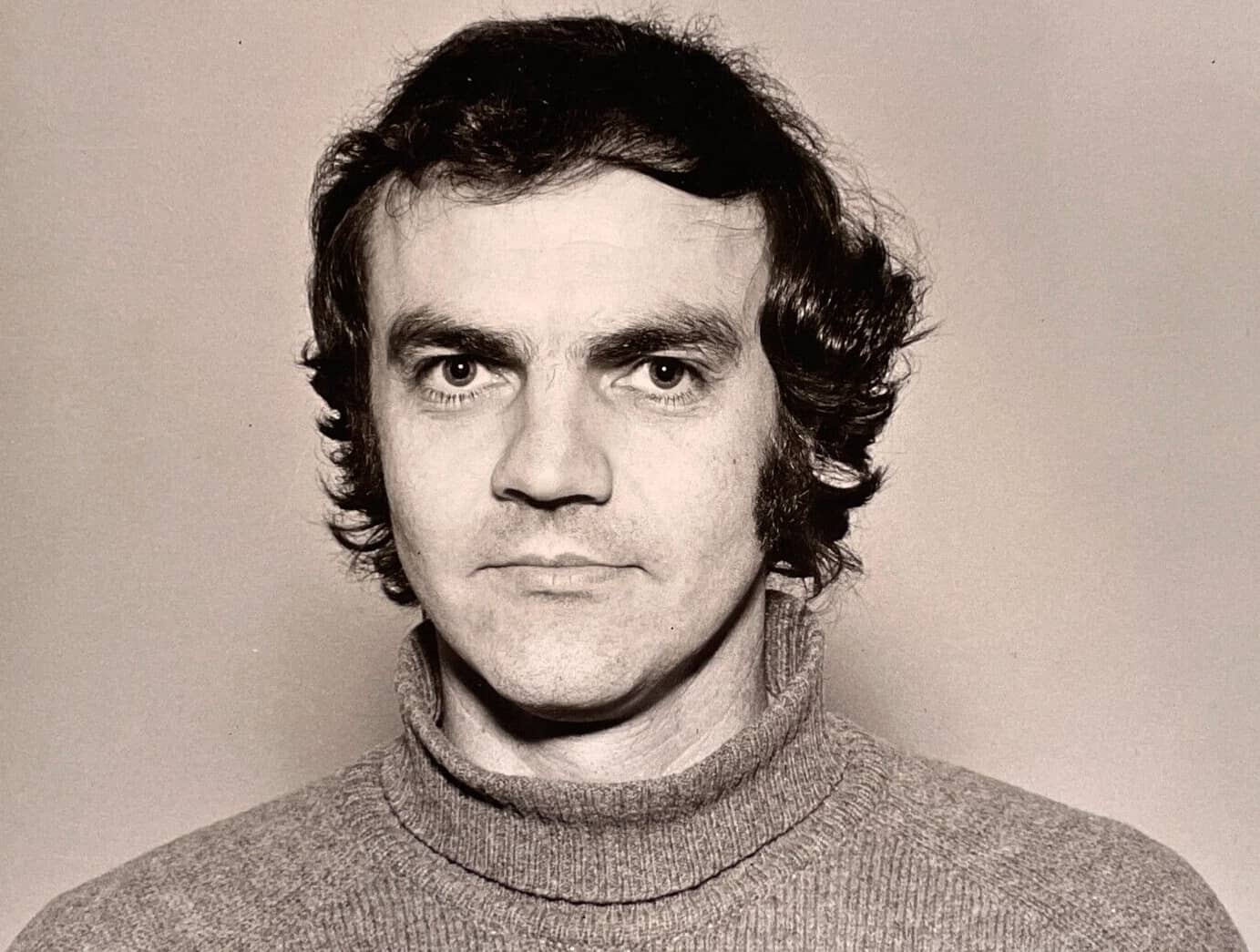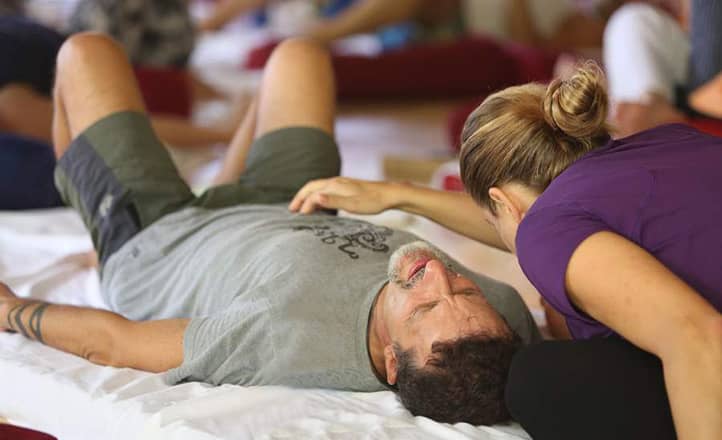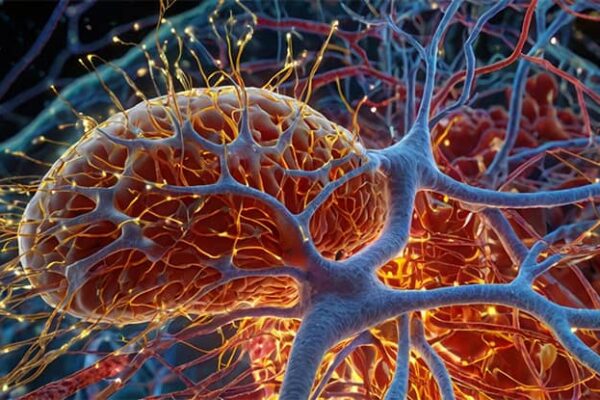Rebirthing is a unique technique aimed at deep consciousness transformation and healing of psychological trauma. This method, based on a special type of breathing, attracts those seeking alternative paths to personal growth and self-awareness. Rebirthing offers a fresh perspective on the potential of human consciousness and body, promising liberation from deeply rooted emotional blocks and negative behavior patterns.
The history of rebirthing traces back to the 1970s when American therapist Leonard Orr accidentally discovered the unusual effects of prolonged immersion in warm water. This led him to develop a technique of connected breathing, which became the foundation of rebirthing. Since then, the method has spread widely around the world, attracting both enthusiasts and skeptics.

Theoretical Foundations of Rebirthing
Human consciousness is an astonishing phenomenon that has intrigued scientists and philosophers for centuries. Rebirthing offers a unique perspective on the nature of our inner world, asserting that the key to self-understanding lies at the very beginning of our existence – the moment of birth.
Breathing is not just a physiological process; it’s also a bridge between the body and the mind. In everyday life, we rarely think about our breathing, yet this automatic act can become a tool for profound transformation.
Body Memory – a concept increasingly discussed in scientific circles – is extended in rebirthing, which suggests that our body holds not only memories of physical trauma but also emotional experiences, including the earliest moments of our life.
The Concept of “Birth Trauma”
At the heart of rebirthing theory is the notion that the birth process can be a traumatic experience for the newborn. This “birth trauma,” according to proponents of the method, has a deep impact on a person’s life, shaping subconscious patterns and behaviors.
According to this theory, during birth, the child experiences intense stress, which can involve sensations of suffocation, panic, fear of death, and other intense emotions. Though not fully conscious, these experiences can remain in the subconscious, influencing a person’s psychological and physical well-being throughout life.
Rebirthing provides the opportunity to “relive” this experience in controlled conditions. Practitioners believe this process helps release the negative effects of birth trauma and unlock new opportunities for personal growth.
The Role of Breathing in Psychological Processes
Rebirthing places particular importance on breathing as a tool for accessing the subconscious. According to this theory, specific breathing patterns can induce altered states of consciousness, allowing a person to experience and process suppressed emotions and memories.
In our normal state, breathing is regulated automatically, and we seldom pay attention to it. However, by consciously altering the breathing pattern, we can influence our physical and emotional state. Rebirthing uses the technique of connected breathing, which is believed to facilitate the release of accumulated emotional tension and open access to the deeper layers of the psyche.
Practitioners of rebirthing claim that through breathing, one can not only relieve stress and tension but also achieve profound insights, reinterpret past experiences, and transform negative beliefs.
The Connection Between Body and Consciousness
Another key aspect of rebirthing theory is the idea of a close relationship between body and consciousness. According to this concept, physical sensations and emotional experiences are inextricably linked, and working with the body through breathing can lead to profound psychological changes.
In rebirthing, the body is viewed as a repository of emotional memory. Suppressed emotions and traumatic experiences are believed to be “stored” in the body in the form of muscular tension, stress, and other physical symptoms. Through conscious breathing and awareness of bodily sensations, rebirthing practitioners aim to release these “stuck” emotions and transform them.
This concept aligns with modern research in psychosomatics, which confirms the complex relationship between a person’s psychological state and physical health.

Rebirthing Technique
Imagine being able to reboot your body like a computer, clearing it of accumulated “errors” and “viruses.” This is the opportunity that practitioners believe rebirthing provides.
The journey into the depths of one’s own consciousness can be an exciting, yet frightening experience. The role of a guide in this journey is played by a facilitator, whose task is to ensure safety and support at every stage of the process.
Time in rebirthing flows differently. An hour-long session may feel like a minute or an eternity, and the effects can last long after it ends. This makes each session a unique experience, unlike any previous one.
Description of the Connected Breathing Process
The central element of rebirthing is the technique of connected breathing. This method involves continuous, rhythmic breathing with no pauses between inhalation and exhalation. Participants usually lie on their backs in a comfortable position, breathing through their mouth, taking deep inhalations and relaxed exhalations.
The process begins with the participant gradually increasing the depth and speed of their breathing. It’s important for the breathing to remain connected, meaning there’s no pause between inhalation and exhalation. This creates a continuous flow of energy, facilitating an altered state of consciousness.
During the session, various physical sensations may occur: tingling in the limbs, muscle spasms, temperature changes. Emotional reactions such as laughter, crying, and anger are also common. All these manifestations are viewed as part of the process of releasing accumulated tension and traumatic experiences.
The Role of the Facilitator
In rebirthing, the facilitator plays an important role – a specially trained specialist who guides and supports the participant during the session. The facilitator helps maintain the correct breathing rhythm, provides emotional support, and aids in interpreting the experiences that arise.
The facilitator’s tasks include:
- Creating a safe and comfortable atmosphere for the session
- Explaining the technique of connected breathing and assisting in mastering it
- Monitoring the participant’s physical and emotional state
- Providing support in case of intense emotional reactions
- Assisting in integrating the experience after the session ends
It’s important to note that the facilitator doesn’t interpret the participant’s experience from a psychoanalytic or other psychological perspective. Their role is to create a space where the participant can independently explore their experiences and reach their own conclusions and insights.
Duration and Number of Sessions
A typical rebirthing session lasts from one to three hours. The number of sessions needed varies depending on the participant’s individual needs and goals. Some people achieve the desired effect in one or two sessions, while others may continue with regular sessions over several months or even years.
It’s usually recommended to start with a series of 10 sessions, conducted at intervals of one to two weeks. This allows for a certain depth in the process and for the results to solidify. After completing the initial course, the participant may continue practicing on their own or consult the facilitator as needed.
It’s worth noting that the effect of rebirthing can be cumulative, meaning each subsequent session may deepen and expand upon the results of previous ones. As a result, many practitioners prefer to return to this technique regularly even after achieving their initial goals.

Effects and Expected Results
Imagine opening a door to a room you didn’t even know existed. Many describe their experience with rebirthing in just this way—an unexpected discovery of new facets of their own personality.
The body and mind are inseparably linked, and changes in one inevitably bring changes in the other. Rebirthing offers a unique opportunity to explore this connection on a profound level. It serves as a bridge between the material and spiritual worlds, revealing new dimensions of consciousness.
Physiological Changes
The practice of rebirthing can cause various physiological changes in the body. During a session of connected breathing, the following effects are commonly observed:
- Changes in heart rate and blood pressure.
- Increased skin electrical activity.
- Changes in muscle tone, often accompanied by involuntary movements or tremors.
- Fluctuations in body temperature.
- Enhanced blood circulation, especially in the extremities.
Advocates of the method claim that regular rebirthing practice can lead to long-term positive changes in physical health, including:
- Improved respiratory system function.
- Increased energy levels.
- Strengthened immune system.
- Normalized sleep patterns.
- Reduced chronic body tension.
However, it’s important to note that these claims require further scientific validation.
Psychological Transformations
The main focus of rebirthing is on psychological change. Practitioners frequently report the following effects:
- Reduced levels of stress and anxiety.
- Improved emotional state, with an overall increase in life satisfaction.
- Increased self-esteem and confidence.
- Enhanced ability to cope with life challenges.
- Release from negative behavioral and thought patterns.
- Boosted creativity and intuition.
- Improved interpersonal relationships.
Many participants report profound insights and a re-evaluation of life experiences as a result of rebirthing practice. They note that the technique helps them better understand themselves, their motives, and emotions.
Spiritual Aspects of the Practice
For some, rebirthing becomes not only a psychological experience but a spiritual one. During sessions, participants sometimes report experiences they describe as:
- A feeling of unity with the universe.
- Transcendent or mystical states of consciousness.
- A sensation of leaving the physical body.
- Experiences of “past lives” or archetypal images.
- A deep sense of inner peace and harmony.
It’s important to note that the interpretation of these experiences largely depends on the individual’s beliefs and cultural context. Rebirthing is not tied to any specific religious or spiritual tradition and can be integrated into various worldviews.

Scientific Research and Criticism of the Method
In a world where evidence-based medicine is becoming the gold standard, any alternative practice inevitably faces criticism. Rebirthing is no exception, sparking intense debate within the scientific community.
Some critics argue that the effects of rebirthing may be explained by the placebo effect, which, nonetheless, does not diminish its potential benefits since the placebo effect itself is a powerful tool for self-healing.
However, the line between therapeutic impact and potential harm can be thin. This is particularly relevant for practices that work with deep layers of the psyche, raising legitimate concerns among professionals.
Overview of Existing Research
Despite rebirthing’s popularity, relatively few scientific studies have been conducted on this method. Most available information is based on testimonials and clinical observations by practicing therapists.
Some small studies have attempted to assess rebirthing’s impact on participants’ psychological state by examining factors such as anxiety levels, depression, self-esteem, and quality of life. There has also been research on the physiological effects of connected breathing. However, many of these studies face methodological limitations, such as small sample sizes or the absence of control groups, which complicates the generalization of findings.
Skeptics’ Arguments
Critics of rebirthing raise several arguments against this method:
- Lack of scientific basis: Many claims about the effectiveness of rebirthing are not supported by reliable scientific data.
- Risk of hyperventilation: The connected breathing technique can lead to excessive exhalation of carbon dioxide, which may cause unpleasant and potentially dangerous symptoms.
- Risk of re-traumatization: Intense emotional experiences during sessions can be traumatic for some participants, especially if they do not receive adequate support.
- Doubts about the concept of “birth trauma”: Many psychologists and neuroscientists are skeptical of the idea that birth experiences can have long-term effects on an adult’s psyche.
- Lack of standardization: Rebirthing techniques can vary greatly depending on the practitioner, making it difficult to assess their effectiveness and safety.
Debates within the Scientific Community
Rebirthing remains a topic of active discussion in the scientific and psychotherapeutic communities. Key points of debate include:
- Mechanisms of action: There is no consensus on how exactly rebirthing works. Some researchers suggest that its effects may be related to changes in brain activity patterns or influences on the autonomic nervous system.
- Placebo effect: There is a view that rebirthing’s positive outcomes may be largely due to the placebo effect and participants’ expectations.
- Ethical considerations: The ethics of using techniques that can provoke intense emotional reactions, particularly in vulnerable populations, is a subject of discussion.
- Integration with traditional therapy methods: Some specialists are exploring the potential for combining rebirthing with other psychotherapeutic approaches.
- The need for further research: Many scientists are calling for larger and more methodologically rigorous studies to assess rebirthing’s effectiveness and safety.

Application of Rebirthing
The modern world presents numerous challenges that require innovative approaches to mental health. Rebirthing offers an unconventional perspective on addressing psychological issues, attracting interest from both professionals and the general public.
Some artists and athletes turn to rebirthing in search of new sources of inspiration and inner resources, as creativity and sports are areas where mental preparation is as crucial as physical.
In an era of technology and information overload, more people are seeking ways to reconnect with their bodies and emotions. Rebirthing provides a unique experience of this reconnection, which explains its growing popularity in the field of personal development.
In Psychotherapy
Despite the lack of widespread recognition in traditional psychiatry, some psychotherapists incorporate elements of rebirthing into their practice. Key areas of application include:
- Treating anxiety disorders and depression: Some therapists use connected breathing techniques to reduce stress and improve patients’ emotional states.
- Working with psychological trauma: Rebirthing can serve as a supplementary method in the treatment of post-traumatic stress disorder (PTSD).
- Overcoming addictions: Certain rehabilitation programs incorporate rebirthing to address the emotional causes of addictive behaviors.
- Psychosomatic disorders: This technique may be used to address the physical manifestations of psychological issues.
- Family therapy: Elements of rebirthing are sometimes applied to enhance communication and emotional connections among family members.
It’s important to note that applying rebirthing in psychotherapy requires specialized training and must be adapted to the individual characteristics and needs of each client.
In Personal Development
Many people turn to rebirthing as a tool for personal growth and self-awareness. In this context, the method is used to:
- Increase self-awareness and emotional intelligence.
- Foster creativity and intuition.
- Overcome personal limitations and fears.
- Improve relationships with others.
- Explore life purpose and meaning.
Practitioners often report that regular rebirthing sessions help them better understand themselves, their needs, and motives, leading to a more conscious and fulfilling lifestyle.
In Sports and Creative Practices
Some athletes and creative professionals use elements of rebirthing to enhance their performance:
- In sports: The technique may be applied to reduce pre-competition anxiety, improve focus, and increase endurance.
- In the arts: Artists, musicians, and actors sometimes turn to rebirthing to overcome creative blocks and expand their artistic capabilities.
- In business: Some entrepreneurs and managers use this practice to build resilience to stress and develop leadership qualities.
While the effectiveness of rebirthing in these areas has not been scientifically confirmed, many practitioners report subjective improvements in their abilities and performance.

Contraindications and Precautions
Any powerful tool requires careful handling, and rebirthing is no exception. As a practice that works at the intersection of physiology and psychology, it may carry certain risks for some people.
The human body is a complex system, and any intervention in its functioning can have unpredictable consequences, especially for those with chronic illnesses or specific physiological conditions.
Similarly, the human psyche is a fragile and intricate system. The intense experiences that rebirthing can trigger may be both healing and traumatizing, underscoring the importance of professional guidance.
Medical Contraindications
Although rebirthing is considered relatively safe for most people, certain medical contraindications exist:
- Cardiovascular diseases: People with serious heart problems should consult a physician before beginning the practice.
- Epilepsy: Intense breathing may trigger seizures in individuals with this condition.
- Glaucoma: Increased intraocular pressure may worsen during a session.
- Pregnancy: Although some practitioners adapt rebirthing for pregnant women, this requires special caution and medical consultation.
- Mental disorders: People with severe mental illnesses, such as schizophrenia or bipolar disorder, should avoid this practice or engage in it only under the supervision of a qualified specialist.
- Recent injuries or surgeries: Full recovery should be achieved before beginning rebirthing practice.
Psychological Risks
In addition to physical contraindications, there are psychological risks to consider:
- Risk of re-traumatization: Intense emotional experiences during a session can be traumatic for some participants, especially if they have a history of psychological trauma.
- Disorientation: Some individuals may experience temporary disorientation or confusion after intensive sessions.
- Emotional instability: In rare cases, the practice can cause temporary increases in anxiety or depressive symptoms.
- Dependence on the practice: Some people may become overly reliant on rebirthing as a solution for all life issues, neglecting other important aspects of self-care.
The Importance of Qualified Guidance
Given the potential risks and intensity of the experiences associated with rebirthing, practicing it under the guidance of a qualified specialist is crucial, especially for beginners. A competent facilitator should:
- Conduct a preliminary consultation to assess the participant’s readiness and identify possible contraindications.
- Provide a safe and comfortable environment for sessions.
- Be able to recognize signs of distress and respond appropriately.
- Assist in integrating the experience after the session.
- Know when to refer clients to other professionals (psychologists, doctors) if serious issues arise.

Conclusion
Rebirthing is an intriguing and controversial method of working with the mind and body. Despite lacking broad scientific recognition, many practitioners report significant positive changes as a result of this practice. Based on the theory that birth trauma affects the human psyche, rebirthing uses connected breathing techniques to access the subconscious. This method can induce profound physiological, psychological, and even spiritual changes, making it appealing to those seeking alternative paths to self-knowledge and personal growth.
However, it should be noted that scientific studies on rebirthing are limited, and many claims about its effectiveness are based mainly on anecdotal evidence. This invites justified criticism from the scientific community and underscores the need for more rigorous research on this method. Additionally, there are certain medical contraindications and psychological risks that should be considered before starting the practice. Thus, rebirthing requires qualified supervision, especially for novices.
Future developments of this method may include conducting larger, more rigorous scientific studies to evaluate its effectiveness and safety. Another promising direction could be the integration of rebirthing elements with other psychotherapeutic approaches. Developing standardized session protocols could enhance the safety and effectiveness of the practice. Moreover, exploring the potential applications of rebirthing in new areas, such as corporate stress management or rehabilitation after trauma, may open up new possibilities for this method.
In conclusion, like any method of working with the mind, rebirthing requires a cautious and responsible approach. Those interested in this practice are encouraged to thoroughly research, consult specialists, and make an informed decision on its suitability for their circumstances.




